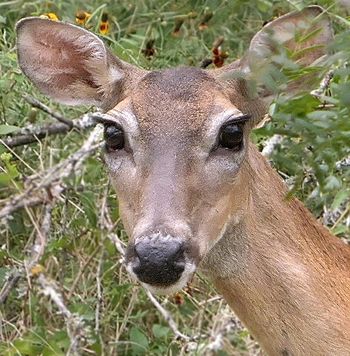
Odocoileus virginianus (white-tailed deer doe)
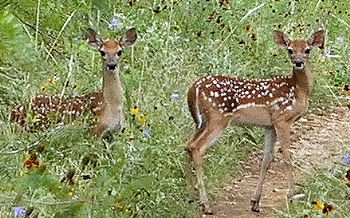
Odocoileus virginianus (white-tailed deer fawns)
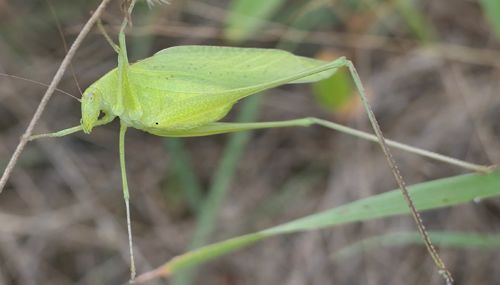
Amblycorypha huasteca (Texas false katydid)
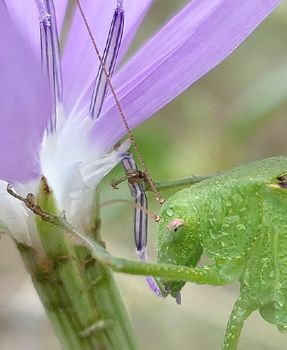
Amblycorypha huasteca (Texas false katydid)
| Most katydids, as well as grasshoppers and crickets, eat a wide variety of plants. Their camouflage colors help keep them safe while they remain in matching habitat, but sometimes the most nutritious food happens to be a contrasting hue. This individual has solved that conundrum by pulling the tasty anther down below the flower without having to venture into a more conspicuous position. |

Arethaea sp. (thread-legged katydid nymph)

Conocephalus strictus (straight-lanced meadow katydid)
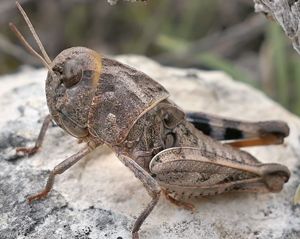
Hippiscus ocelote (wrinkled grasshopper nymph)

Melanoplus plebejus (plebeian grasshopper nymph)
| All the grasshoppers and katydids shown here (four above and next three) are extremely cryptic in this mixed rock and flora landscape. It is notable how often any particular insect chooses instinctively to remain still on a matching color, behavior essential to survival in such an open area with few places to hide. Another factor contributing to this adaptation is the variability of some species, such as the Handsome Grasshopper shown below, which can be green or brown. |
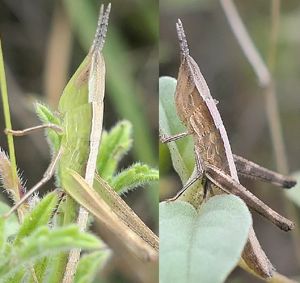
Syrbula admirabilis (handsome grasshopper nymphs)
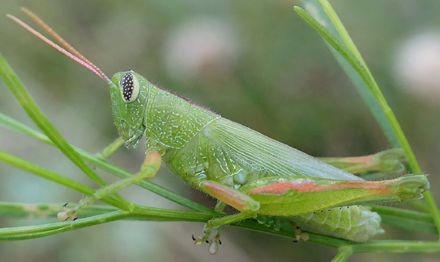
Hesperotettix speciousus (showy grasshopper)
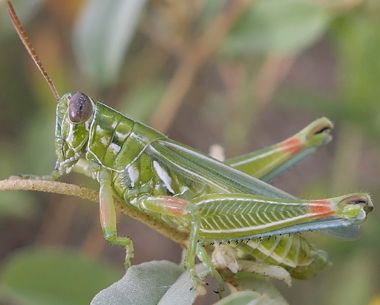
Hesperotettix viridis (purple-striped grasshopper)
| While the Showy Grasshopper is quite common in our area, the closely-related Purple-striped Grasshopper is not. This is the first time I have seen this species! |
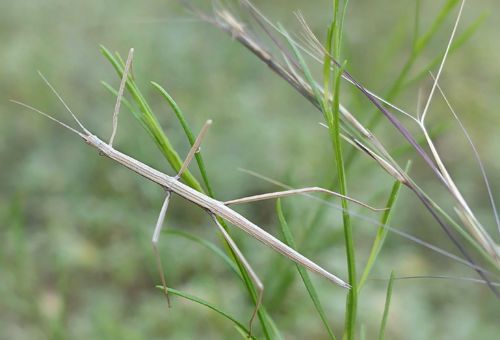
Pseudosermyle strigata (walking stick nymph)
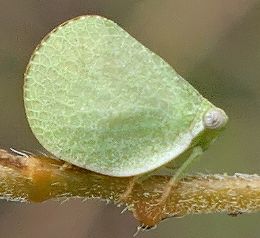
Acanalonia parva (planthopper)

Acanalonia parva (planthopper ovipositing debris)
| The tiny Acanalonia planthopper used her knife-like ovipositor to insert eggs into the plant stem shown above, displacing some of the stem material into little piles, like sawdust produced when sawing a log. |

Bruchomorpha sp. (piglet bug)
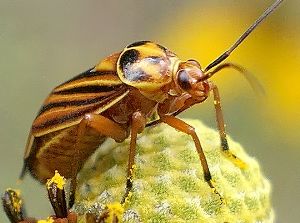
Calocoris barberi (plant bug)
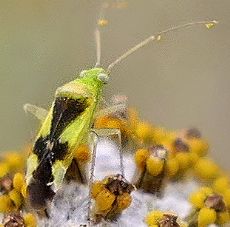
Reuteroscopus ornatus (plant bug)
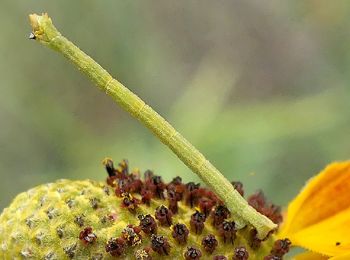
Chlorochlamys chloroleucaria (blackberry looper)
| In two examples of how caterpillars conceal themselves from predators, the Blackberry Looper shown above freezes in a stiff position resembling a bit of plant stem, while the Camouflaged Looper illustrated below uses silk to affix bits of the flower it is eating onto its back. The adult moths of both these species are called Emeralds because of their green wings. |
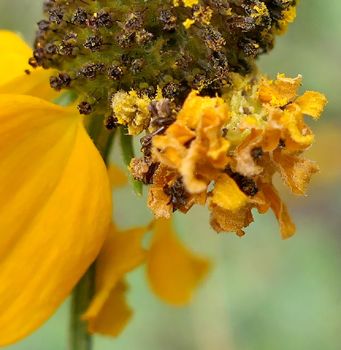
Synchlora frondaria (camouflaged looper)
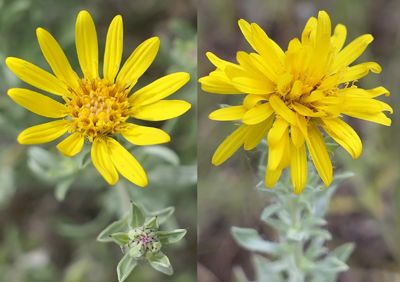
Heterotheca canescens (gray golden-aster)
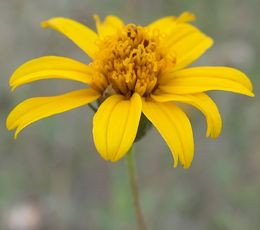
Wedelia acapulcensis (zexmenia)

Lygodesmia texana (Texas skeleton plant)

Thelesperma simplicifolium (Navajo tea)

Tetragonotheca texana (square-bud daisy)
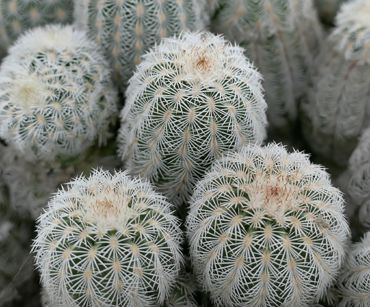
Echinocereus reichenbachii (lace cactus)
| Cactus spines are actually highly modified leaves no longer capable of photosynthesis; they instead protect the enlarged stems which perform that essential task. |
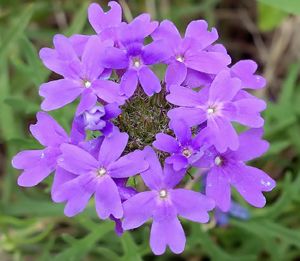
Verbena bipinnatifida (purple prairie verbena)
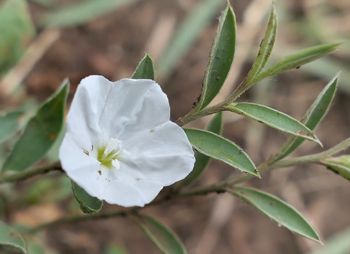
Evolvulus sericeus (silver dwarf morning-glory)
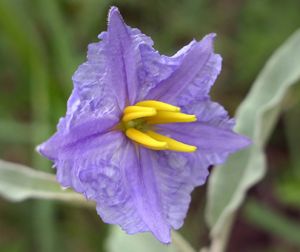
Solanum elaeagnifolium (silverleaf nightshade)
| The anthers shown above are poricidal, meaning they are tubes with pollen inside. Bees performing buzz pollination, or sonication, vibrate the tube to discharge the pollen out of the opening at the tip. |
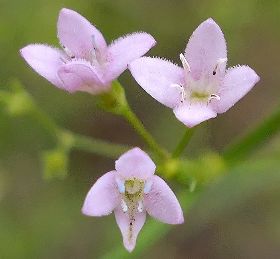
Stenaria nigricans (diamondflower)

Panicum obtusum (vine mesquite)

Chasmanthium latifolium (broadleaf wood-oats)

Tridens muticus (slim tridens)
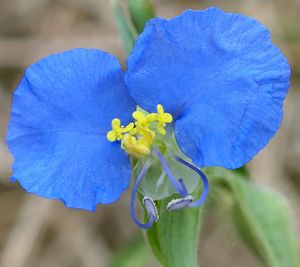
Commelina erecta (dayflower)
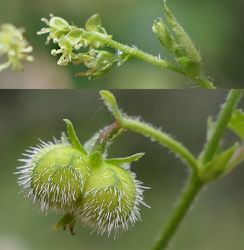
Tragia ramosa (noseburn)
| Although its stinging hairs are very similar to nettles, Noseburn is actually in the family Euphorbiaceae. While the toxins deter mammal browsing, they have no effect on insects that feed on the plants. |

Centaurium texense (Lady Bird's centaury)

Senna roemeriana (twoleaf senna)
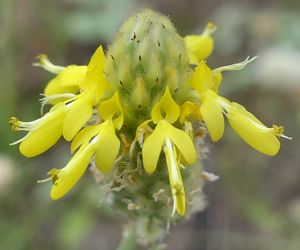
Dalea aurea (golden dalea)

Argemone albiflora (white prickly poppy seed pod)
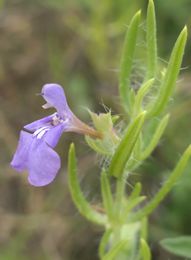
Salvia texana (Texas sage)
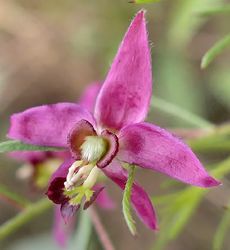
Krameria lanceolata (ratany)
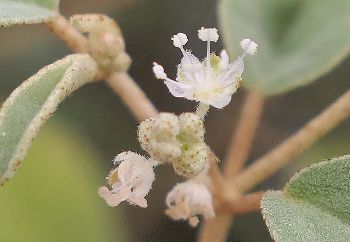
Croton monanthogynus (prairie tea)
| This low-growing annual has a number of different common names, including doveweed, one-seed croton and prairie goatweed. |
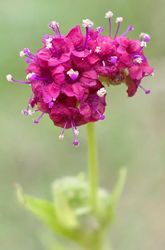
Boerhavia coccinea (scarlet spiderling)
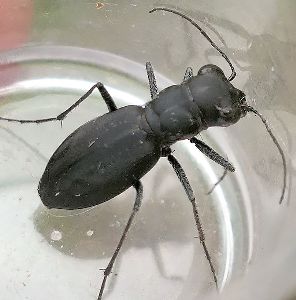
Dromochorus belfragei (tiger beetle)
| Unlike many tiger beetle genera, the elytra (wing coverings) of this one are fused, making the insect more resistant to desiccation and predation, but also rendering it flightless. |
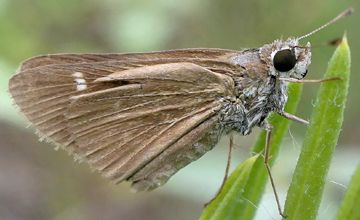
Lerodea eufala (eufala skipper)

Hemiargus ceraunus (ceraunus blue)
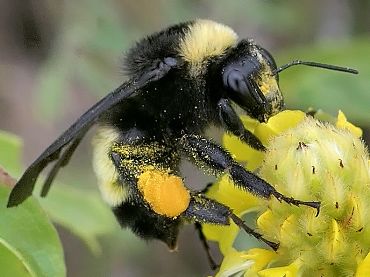
Bombus pensylvanicus (American bumble bee)
| The glob of pollen on this bee's corbicula (pollen basket) identifies her as a worker. Males (drones) do not collect pollen for nests and at this time of year it would be highly unusual to see a queen doing so. |
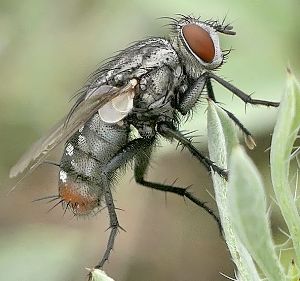
Unknown sp. (flesh fly)
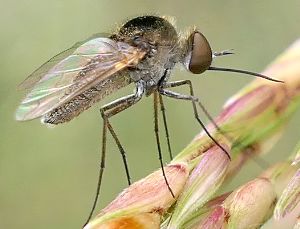
Geron sp. (bee fly)

Mecaphesa dubia (crab spider)
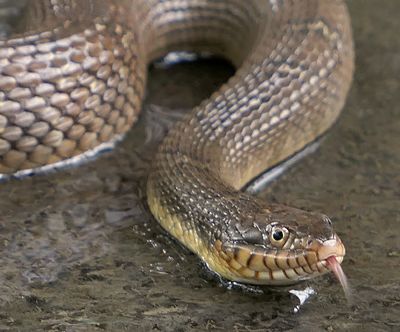
Nerodia erythrogaster (plain-bellied water snake)
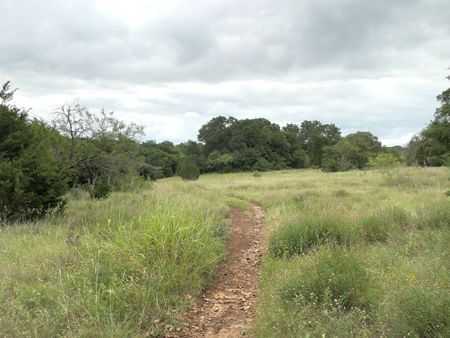
View of trail through open meadow.
| It looks remote, but the sounds from nearby yards are a constant reminder that this is definitely an urban greenbelt. |

![]()